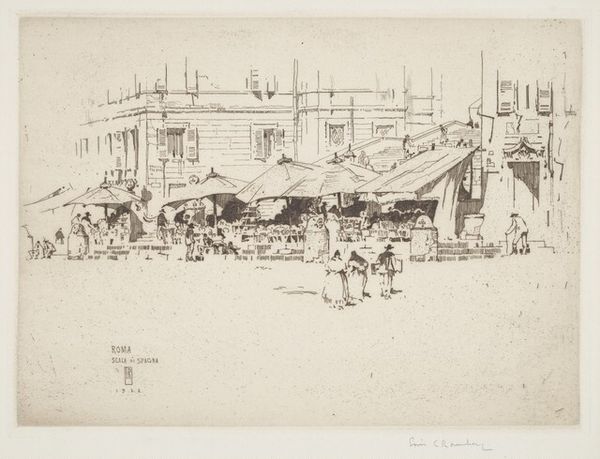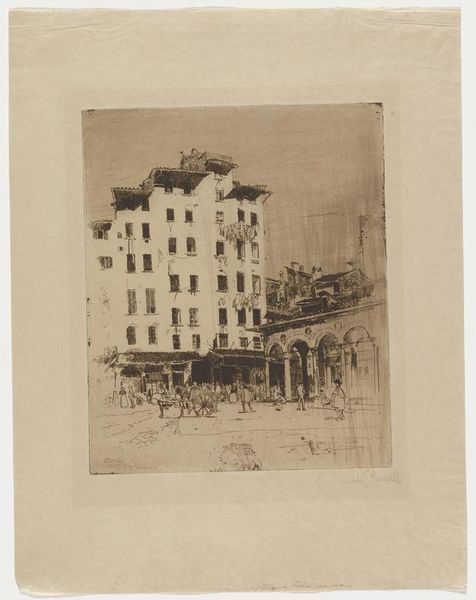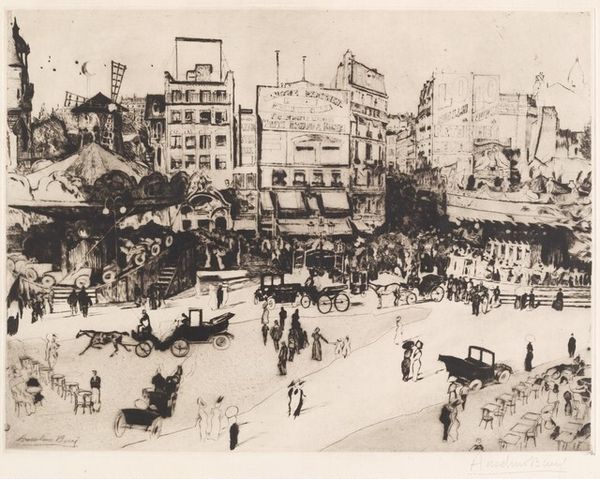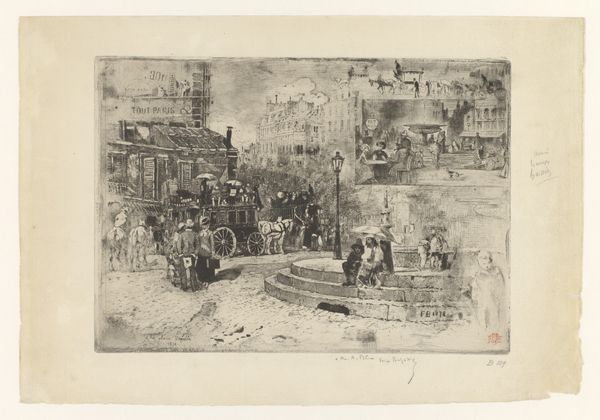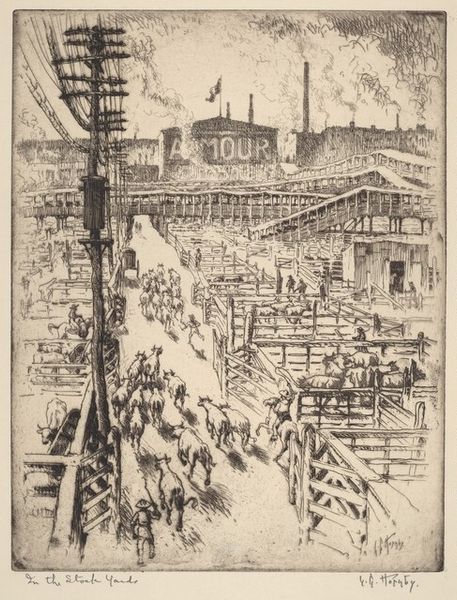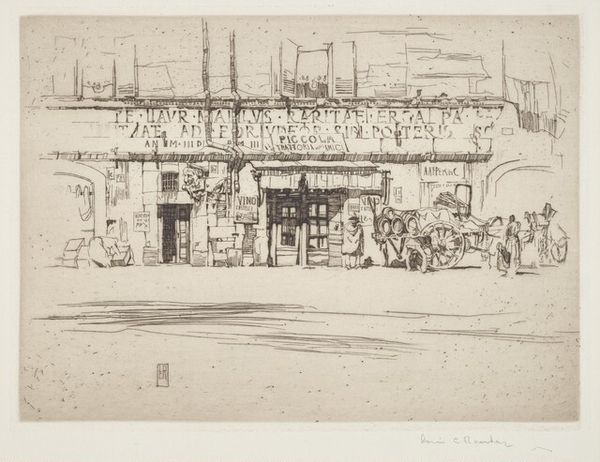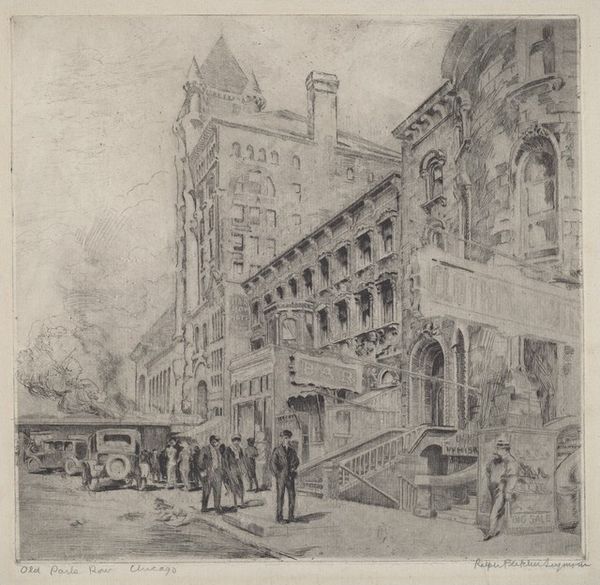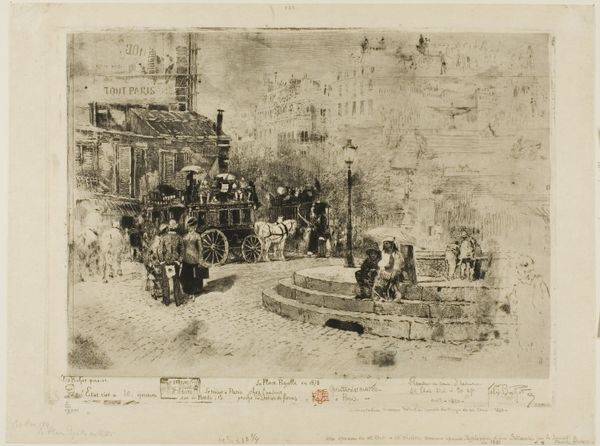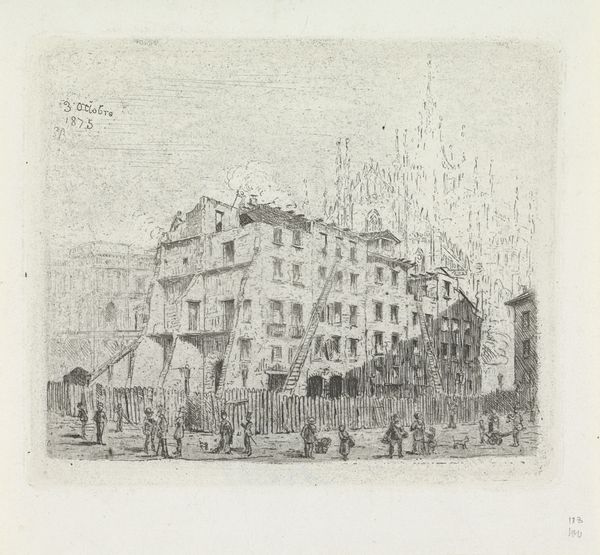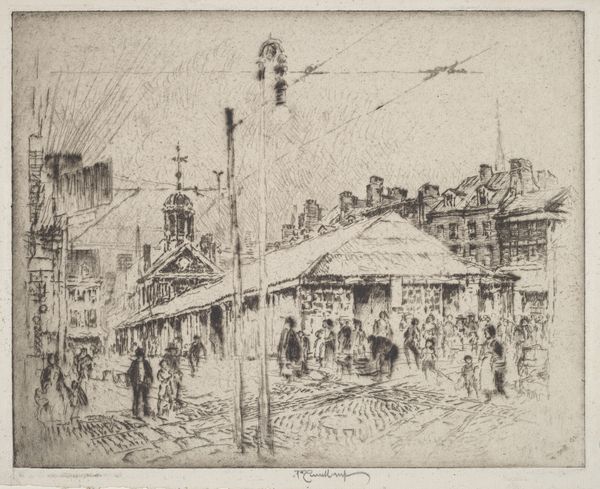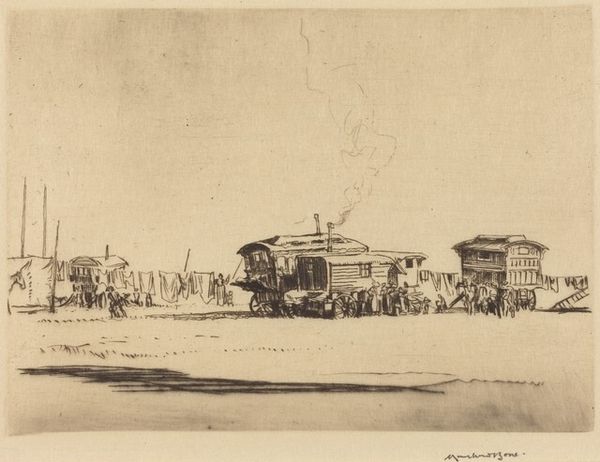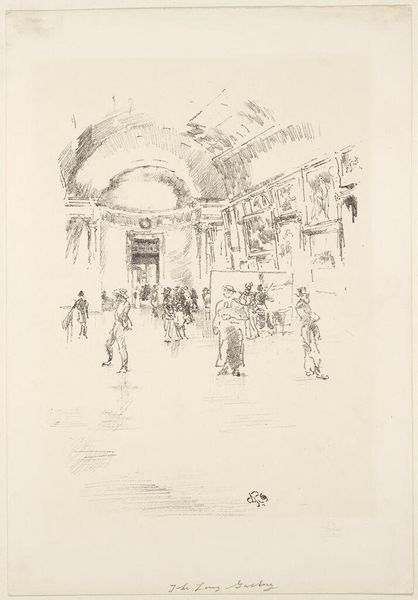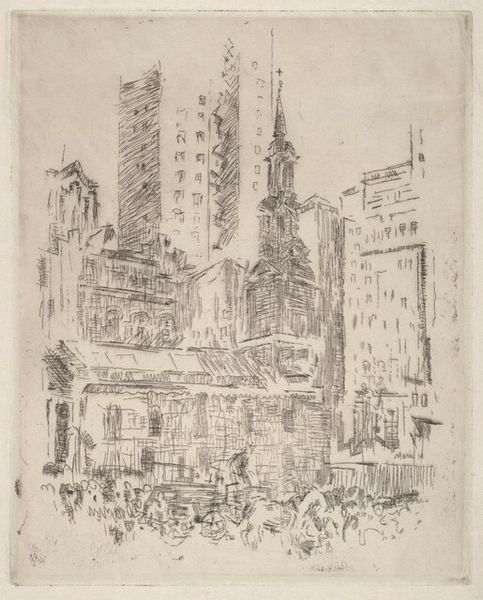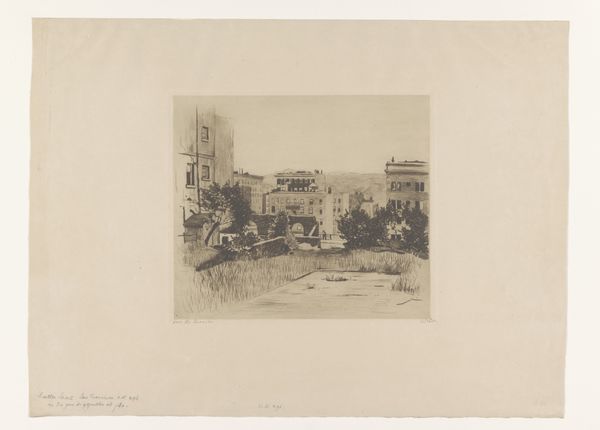
drawing, print, etching, ink, pencil
#
drawing
#
narrative-art
# print
#
etching
#
etching
#
ink
#
pencil
#
cityscape
#
realism
Dimensions: overall (approximate): 34.5 x 47.5 cm (13 9/16 x 18 11/16 in.)
Copyright: National Gallery of Art: CC0 1.0
Editor: We’re looking at “Shipyard Workers,” a 1945 etching by Louis Conrad Rosenberg. It's quite detailed, showing a busy shipyard with many figures. I’m struck by how it captures the energy of industry, but there's also something almost overwhelming about the sheer number of people depicted. What stands out to you? Curator: What I notice is the intersection of industry and labor in this work, particularly within the historical context of 1945. Considering this piece was made at the close of World War II, it represents not just a scene of American industrial might but also the immense social effort that fueled the war machine. It prompts a lot of questions about the cultural impact of the war effort, doesn’t it? Editor: It certainly does. So, the figures aren’t just workers; they are part of a larger narrative of national mobilization? Curator: Exactly. Rosenberg isn’t merely documenting a scene; he's presenting a social landscape, an active part of the war and postwar economies. What kind of impact did the wartime economy have on societal demographics? Also, note how the institution of art, supported through commissions and patriotic displays, legitimized certain forms of labor. Does this artwork normalize that? Editor: I see your point. It definitely glorifies industry, but without romanticizing the individual worker, perhaps reflecting a time when collective effort was prioritized. Thinking about it that way offers such a different viewpoint. Curator: Right, and by focusing on the “shipyard worker,” Rosenberg creates an accessible image rooted in public perception, reflecting a socio-political attitude regarding manufacturing labor. It is definitely a perspective on history, shaped and influenced by both personal perspective, institutional factors, and external influences. Editor: This has broadened my understanding of the image so much! It's not just a snapshot of a place and time but a window into societal values and historical forces. Curator: Precisely! Examining art through such a multifaceted historical lens offers fascinating insight.
Comments
No comments
Be the first to comment and join the conversation on the ultimate creative platform.
